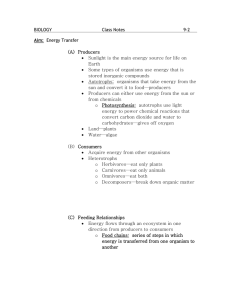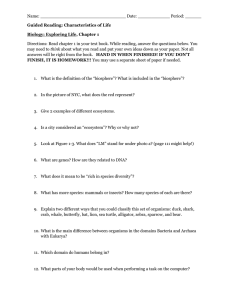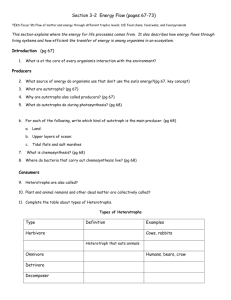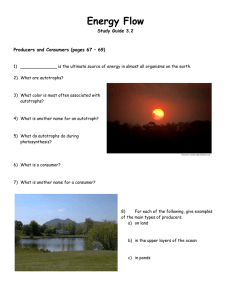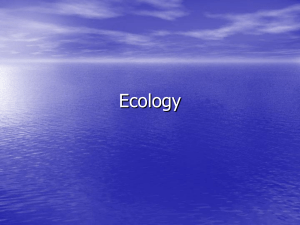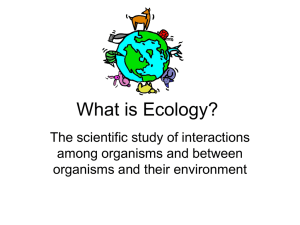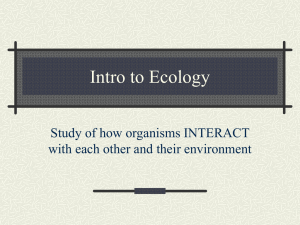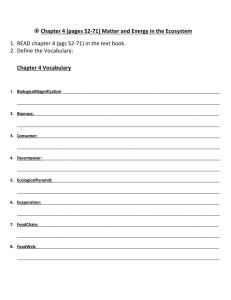What is Ecology and Energy Flow
advertisement
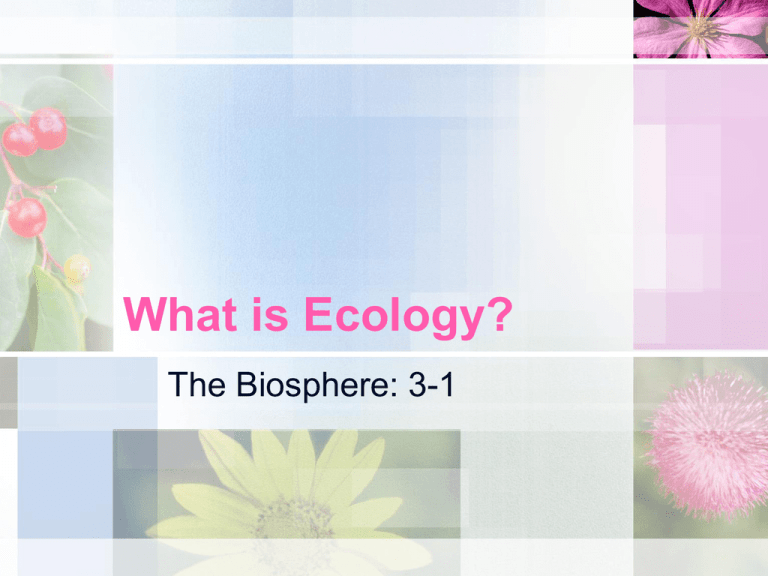
What is Ecology? The Biosphere: 3-1 1. Interactions and Interdependence A. Ecology – the scientific study of interaction among organisms and between organisms and environment, or surroundings. i. Biotic factors - Living organisms in a habitat. a. Ex: animals, plants ii. Abiotic factors - physical (nonliving) aspects of a habitat. b. Ex: air, wind, water Finding Nemo Clip! B. The Biosphere i. contains life, including land, water, air or atmosphere. ii. Interdependence among organisms. Bee and Flower Sea Anemone and Fish 2. Levels of Organization A. Information at each level helps our understanding of natural systems i. Species – group of organisms so similar to one another that they can breed and produce fertile offspring. Biosphere Biome Ecosystem Community Population Individual Energy Flow The Biosphere: 3-2 1. Producers a. Sunlight is the main source for life on Earth. b. Some rely on energy stored in inorganic chemical compound. i. EX: Mineral water c. Autotrophs - capture energy or sunlight to produce food. A. PHOTOSYNTHESIS Best Known Autotrophs - Plants (land) - Algae (water) * Know FORMULA B. LIFE WITHOUT LIGHT 1. Consumers a. Organisms that rely on producers for their energy. i. Heterotrophic 5. Feeding Relationships a. Food Chains – the energy stored by producers can be passed through an ecosystem through a series of steps where organisms transfer energy. b. Food Web i. Made up of many interactions, many food chains tied together. Many types of consumers Herbivores eat plants. Carnivores eat animals. Omnivores eat both plants and animals. Detritivores feed on plant and animal remains and other dead matter. Decomposers, like bacteria and fungi, break down organic matter. 1. Energy Flow a. Energy transfers through an ecosystem in one direction, from the sun or inorganic compounds to autotrophs (producers) and then to various heterotrophs (consumers). b. Trophic Levels i. Each step in a food chain or food web is called a trophic level. ii. Producers make up the first trophic level. iii. Consumers make up the second, third, or higher trophic levels. iv. Each consumer depends on the trophic level below it for energy. c. Energy Pyramid i. Energy present at each level ii. Only about 10 percent of the energy is transferred to organisms at the next trophic level. iii. Energy is used and lost as heat! d. Biomass Pyramid
